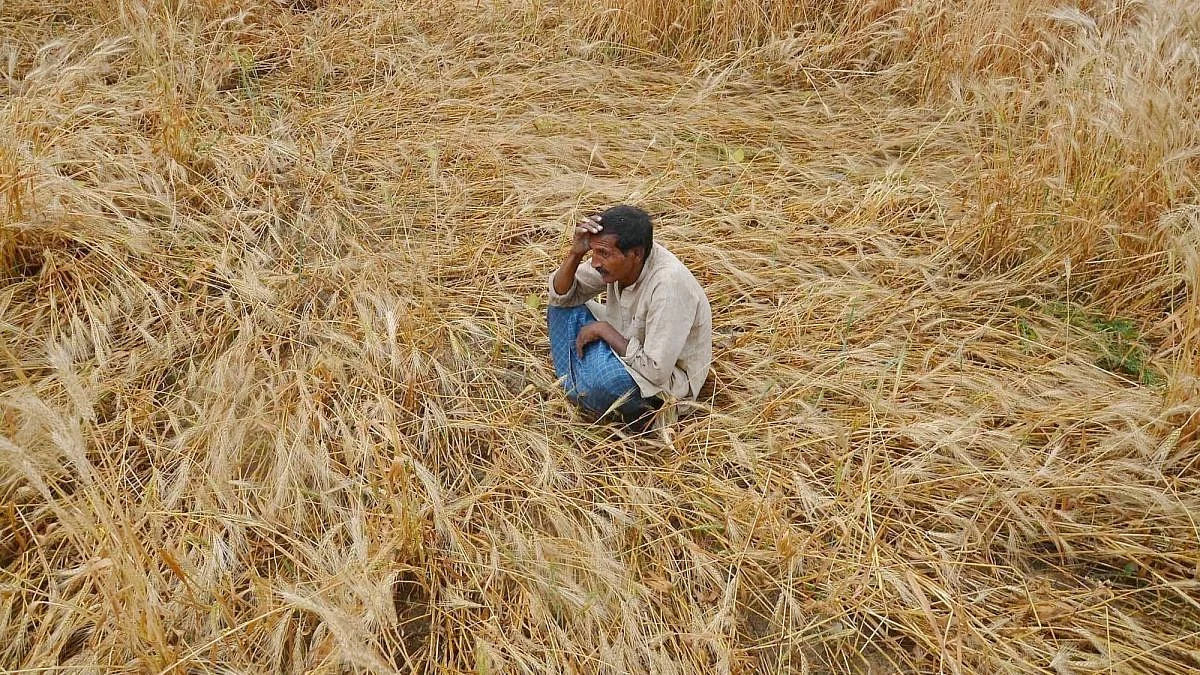Pricey Parathas, Overpriced Milk Cakes: Climate Change’s Diwali Gifts To India
A deficit monsoon followed by sudden excessive rains threatens the Kharif harvests .

advertisement
Heatwaves and untimely rains have already eaten into India’s wheat harvest. And it looks like paddy won’t be spared either. A deficit monsoon followed by sudden, excessive rains threatens the Kharif harvests as well.
Development of Climate-Resilient Agri-Material Is the Next Step
Madhya Pradesh, Rajasthan, Kashmir, Uttar Pradesh, Karnataka, et al have reported severe crop losses this year. Slowly but steadily, the changing climate is damaging our farms and inflating the price of our meals. Animals haven’t been spared either. A drop in wheat production led to a sharp inflation in fodder prices.
Post-harvest losses are likely as many regions have reported rainfall on mature crops, inviting fungal diseases and pest to the harvest. Millets, pulses and oilseeds (like sesame, soybean) are all affected by erratic rains.
What does the poor produce in both major seasons-- Rabi and Kharif mean when coupled with the global food crisis?
Food price inflation.
Say Goodbye to Monocultures, It's Time For Multicropping
Agriculturally speaking, we need to reorient our agrarian policy. The Green Revolution mindset is no longer economically or ecologically sustainable. Time to say goodbye to crop monocultures i.e. planting of single crops and move towards intercropping and multi-cropping.
This means that each field needs at least two or three crops at the same time. This will also increase the nutrition per acre and make farmers more climate-resilient.
Climate-Resilient Seeds Can Be a Gamechanger
It is time to go back to agriculture 101 and explore India’s vast Plant Genetic Resource (PGR) diversity to produce climate-resilient seeds. Through public-private partnerships, we can unshackle PGR of our national gene reserves.
Investments from the private sector can galvanise government’s Research and Development (R&D) on climate-resilient seeds. The Indian Agricultural Research Institute (ICAR-IARI) can lead this effort if their budgets are increased and focused on climate resilience.
Climate change also brings the threat of newer pests and disease to an area, and spraying tonnes of pesticide is not a sustainable solution. Hence, we need to diversify the gene pools of our crops which are currently quite limited.
We need to create a portal similar to the National Bureau of Plant Genetic Resources' (NBPGR) gene bank portal to incentivise and identify local varieties that can resist climatic stresses.
Each district should have reserves of climate-resilient seeds to supply to farmers in times of need. We also need to restart area-specific evolutionary participatory seed breeding through State Agriculture Universities (SAUs) and Farmer Producer Organisations(FPOs)and groups.
Big Tech? Not Really.
Now, despite the big “hoo-ha” about weather prediction, Artifical Intelligence( AI), we are still far from accurately predicting the weather. And, translating that data to improve crop planning is still decades away.
Given the failure rate of weather prediction platforms in reaching farmers and their economic despondency, we should be cautious before embracing corporate-driven solutions such as Climate-smart agriculture, which are energy-heavy and have numerous hidden costs.
The efficiency of such tech should be tested independently before implementing them throughout the country.We Must Transition to Climate-Friendly Organic Farming
We Must Switch to Climate-Friendly Organic Farming
Finally, it’s time to address the two big issues-- Agri-chemicals and Factory farms. Luckily, India doesn't have many factory farms except for the poultry industry. Most Indian meat is comparatively less polluting and healthier.
However, rampant use of nitrogen fertilisers, Diammonium phosphate(DAP), and other agri-pesticides is destroying our environment because fertiliser production and usage cause huge emissions.
The billions of dollars spent in subsidising the polluters can be redirected towards research and development for sustainable and pollution-free agriculture.
This doesn't mean we have to be a Sri Lanka and ban agri-chemicals overnight but we do need to transition to natural or organic agriculture. Prime Minister Modi has already stressed on natural farming but more financial incentives should be given to encourage farmers towards it.
Expand the Crop Insurance Scheme
Thousands of farmers’ claims for insurance were rejected this year. Our insurance schemes should be sensitive to the climate crisis and have special clauses for climate-related damages.
Compensation should be based on yield values and not on input costs alone.
Climate change is real, and it’s already showing its virulent effects. It is about time the policymakers wake up.
(Indra is an independent agriculture analyst and writer. He was also the former director, policy and outreach, National Seed Association of India. This is an opinion piece and the views expressed above are the author’s own. The Quint neither endorses nor is responsible for the same.)
Our on-ground climate journalism needs your insights, ideas, and financial support - as we cover the biggest crisis of our times. Become a Q-Insider so we can bring more such stories to light.
(At The Quint, we question everything. Play an active role in shaping our journalism by becoming a member today.)